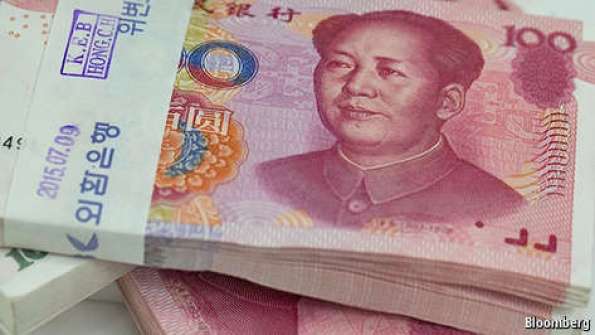The central bank in China is now making emergency moves to prop up the yuan after it tried to move to a free float, market-based pricing of its currency. But the damage is being done, and here is the backstory Wall Street sources are concerned about: China was forced because of its currency devaluation to let the currency float because it faces a severe credit crisis, signaled by a dramatic spike higher in interbank lending rates. That spike higher is always a red flag that a government is contending with a banking or credit crisis (remember the summer of 2008 in the U.S.?) that will take a lot more to heal than igniting slowing exports via a devaluation, Wall Street sources say.
Moody‘s Investors Service warned that China’s currency drop may sting Apple’s iPhone sales, while Jefferies & Co.’s Sundeep Bajikar also said that its sales so far are appearing weaker there.
Bajikar is keeping a hold rating on Apple and has cut his price target to $130 from $135, warning of “macro demand uncertainty for iPhone primarily in China.” Apple, he says, is “cutting iPhone-related orders in the supply chain. ”Our checks also continue to suggest that iPhone is facing strong competition in China, primarily from Huawei, Xiaomi, and Samsung.”
But Gene Munster of Piper Jaffray says investors in Apple may be able to take comfort in installment plans introduced by AT&T (T) and Verizon Communications (VZ) two years ago, saying these plans might be a “tailwind” for Apple shares as these customers are “potential early upgrade” smartphone users. He and his team are estimating that Apple’s U.S. iPhone market share will be around 45% in 2015.
So far, Goldman Sachs’ chief U.S. equity strategist David Kostin is warning that EPS estimates for the China-focused stocks below have been slashed by 15% year to date, versus 8% for the S&P 500. Kostin says that 17 of the 20 China-focused stocks have so far reported second quarter earnings, and 39% missed sales expectations by more than one standard deviation, “compared with 26% for the S&P 500.”
Kostin adds: “Despite the modest China revenue exposure of the overall S&P 500, U.S. stocks with high sales exposure to China experienced a large spillover effect from the sell-off in Chinese equities.”
These are the top 20 U.S. companies with the biggest sales exposure to China, according to Goldman Sachs’ Kostin and his team. They average 44% revenue exposure to China versus 2% for the overall S&P 500. The top 20 have seen an average 6% downturn in their year to date stock performance as of last week.










Add comment